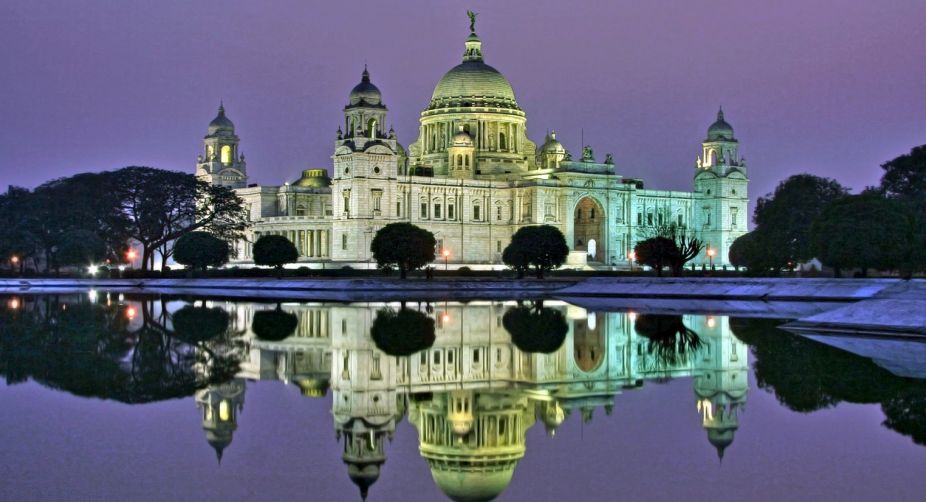City’s tourist spots feel coronavirus heat
“Around two-third of the visitors enter the Memorial's museum,” informed an official of Victoria Memorial.

Photo: Getty Images
The Victoria Memorial celebrated the World Heritage Week from recently in November 2016 with a colourful and interesting line-up of events. The five days culminated into some remarkable moments for the audience who were dazzled with the glimpses of culture reflecting the rich treasury of heritage that the city could afford along with global glimpses from some of the most cherished intellectuals of our times.
At the Western Quadrangle with Warren Hastings overlooking Calcutta or as we would call Kolkata, voiced its heritage of idol-makers, as Professor Surendra Munshi started his discussion on ‘Making Gods; Shaping Excellence: Lessons from Kumartuli Image-Makers in Calcutta’.
The lecture was a result of his year-long research from 1999-2000 of the area and its artists. As a retired professor of Sociology at the Indian Institute of Management, Kolkata he attempted to juxtapose the organisational form of work at Kumartuli with that of the management perspective of the best organisational behaviours guaranteeing success and excellence to the multi-national companies.
Advertisement
He shared his wonder at how a number of unlettered people have been able to adapt to the grammar of producing and delivering excellent idols every year without any institutional training and have been doing so for generations in the most inconvenient circumstances whatsoever.
“There is an ebullient organisational form of work at Kumartuli and they have this functional and creative mode of working. We wonder at how simple people have created modes of functioning that are fantastic not only from an artistic perspective but also in terms of management precepts”, Prof. Munshi said.
We heard him keenly as he took us down the path of Kumartuli alleys where the artists strive every day with expenses and material, share their food on a single thali or how they disregard any hierarchy when the best of the artisans or the owner perhaps cook for the other labourers.
We learned how they store the materials in small measures as they do not have big storage room.
This made us realise how the Indian management institutes send trainees and students to Japan every year to study this method of working in small space while we already have such instances in our own city.
Once the lecture was over the audience had a visual treat from Ranajit Ray who featured his National Award winning film Kumartuli Clay Image-Makers: Ordinary People Extraordinary art followed by an interaction with the director. The film was originally commissioned by the Indira Gandhi National Centre for the Arts, which brought individual voices of the artists residing within the mazy alleyways of Kumartuli. Their words recounting bits of their lifelong experience, informed the spectators that many of them had come from different parts of the country as well as abroad, the gradual procedure of making idols, the amount of endeavour involved, the sacrifices on the parts of the workers, coming originally from different villages of the state and Krishnanagar in particular, work day and night to make ends meet for their families.
Some of the old artisans, to mention a few Nemai Chandra Pal, Netai Pal and Dilip Pal gave anecdotes on how despite promises from the previous government, the Kumartuli people still have to live in the unhealthy and slum-like situation with only the gap of some plastic sheets between a heavy monsoon and the half-finished idols.
Their daily fare is depicted in the most humane way pleading for better provisions and help for the artists at Kumartuli, as Prof. Munshi points out, “this is the world of the image-makers and it is all that they have”.
The event had a deep impression on those present as they were quite amazed with the truth behind the grandeur of Durga puja and how a community of artists despite having huge contributions to this annual tradition are faring no better than a average slum-dweller.
There was also a workshop day at the Western Quadrangle for the members of the Activity Club of the Victoria Memorial Hall on the art of pottery as clay has always been an integral part of the Bengali culture and heritage with Mr. Chanchal Ahmed and his team pivoting the participants around the different moulds of our divergent culture.
Two successive events were organised the next day. First was a performance by the nachnis (dancers) reminding the metro people of this dying art form that the artists in the regional parts of Purulia and Birbhum are trying to uphold through their lyrics bringing in the whiff of local soil with the sentiments and expressions of these half-forgotten people and their culture in association with the Durbar Mahila Samanwaya Committee.
In the evening Professor Margaret Olin, Senior Research Scholar, Divinity School and the Department of the History of Art, Yale University gave a presentation on Conversations on the Periphery: Berlin-Bethlehem where she presented the audience with some remarkable observations on the wall-art and the tradition of mural painting in and around the troubled parts of Berlin and Palestine.
In Berlin only the relics of the political voice remain on the wall and around the check-points that are at some places converted to museums telling the people what transpired in another temporal and political era. She then went on to the tradition of mural painting at Dheisheh, a Palestinian refugee-camp located south of Bethlehem where the politically murdered ones or the martyrs occupy their space on the walls and the children of Dheisheh grow up around these murals of the dead ones with death looming on their poor souls.
This series of events came to the end with the musical performance where the heterogeneous voices and genres of baul, urban folk and Swiss twists mingled with each other producing melodious moments with the half-lit grand-dame of the Victoria Memorial glimmering in the dark evening.
Student, Statesman Print Journalism School.
Advertisement